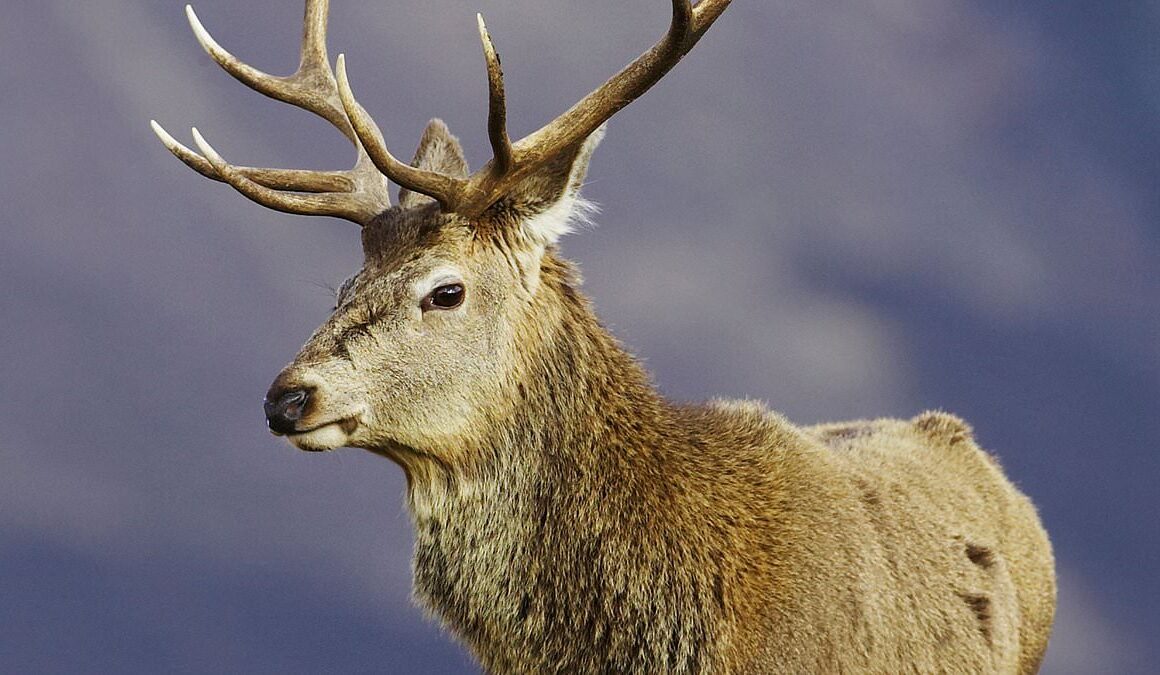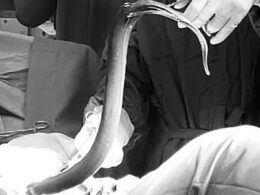The bodies of almost 180,000 deer culled in Scotland every year should be left to decompose naturally to help woodland regeneration, research has found.
Ecologists have warned that by removing carcasses it is potentially undermining habitat recovery due to the loss of tens of thousands of kilograms of nutrients in the soil.
The study published in the British Ecological Society journal, Ecological Solutions and Evidence, has called for the remains to be left to rot to avoid ‘widespread implications for ecosystem recovery’.

Around 180,000 deer are culled in Scotland every year
The alternative to avoiding such nutrient loss, researchers say, would be to reduce the number of culls and allow deer to die naturally on the landscape.
They believe one way to do this while still managing deer numbers would be the controversial reintroduction of natural predators, such as wolves and lynx.
Kristy Ferraro, lead author of the report, said: ‘Our study quantifies an important yet overlooked aspect of current deer management in Scotland. We show that the prevalent practice of removing deer carcasses comes at a cost to ecosystems by depleting essential nutrients, which could have widespread implications for ecosystem recovery.’
The researchers from the universities of Edinburgh and Yale say Scotland’s landscapes are already ‘nutrient poor’ and estimate as much as 251,188kg of calcium, 195,652kg of nitrogen and 152,834kg of phosphorus are lost across Scotland each year.

Experts believe deer carcasses should be left to decompose naturally to provide nutrient
The study was conducted using data from NatureScot, which showed that more than two million deer were culled from 2010 – 2022, and environmental data from Space Intelligence.
They then combined those numbers with the average mass of each of the four deer species and estimated the phosphorus, nitrogen, and calcium present in them.
Calcium loss was seen as having the biggest environmental impact on commercial and native woodland regeneration, with a knock-on effect for birds, which experience declines in shell thickness in low calcium environments.
Carcasses also provide a food source for small predators such as pine martens and have been shown to distract predators away from the nests of ground nesting birds, such as Scotland’s iconic capercaillie, during the breeding season.
Ms Ferraro said: ‘Of course, this raises practical questions about where is suitable to leave carcasses.
‘We have to consider public access to the area and keeping carcasses away from livestock and waterways. Despite this, there are numerous areas of open-range and dense woodlands in Scotland which could serve as initial implementation sites.’
Deer populations in Scotland have been actively managed since 1959 to control overgrazing, with the country’s red, roe, fallow and skia deer all considered overabundant.
An alternative solution, researchers said, would be to reduce the number of culls and reintroduce natural predators to keep numbers down.
Ms Ferraro said: ‘Through predation, both the consumed carcass and what is left behind would ultimately remain in the ecosystem. Further, due to the way in which predators hunt, they would also create heterogeneity in carcass distribution on the landscape, creating hotspots of nutrients that would be difficult for human-hunting to replicate.’







